Grow Dragon Fruit at Home? Absolutely! Imagine plucking a vibrant, exotic dragon fruit straight from your own backyard. Sounds like a tropical dream, right? Well, it’s more achievable than you might think, and I’m here to show you how with some simple DIY magic.
Dragon fruit, also known as pitaya, has a fascinating history, originating in Central America and making its way to Southeast Asia, where it’s now deeply ingrained in the culture and cuisine. For centuries, it’s been prized not only for its unique appearance and delicious flavor but also for its nutritional benefits.
But why should *you* bother learning to grow dragon fruit at home? Well, store-bought dragon fruit can be expensive and sometimes lack the freshness and flavor of homegrown varieties. Plus, there’s immense satisfaction in nurturing a plant from a small cutting to a fruit-bearing beauty. In this article, I’ll share my favorite DIY tricks and hacks to help you successfully cultivate these stunning fruits, even if you don’t have a green thumb. Get ready to transform your garden (or even your balcony!) into a tropical paradise!
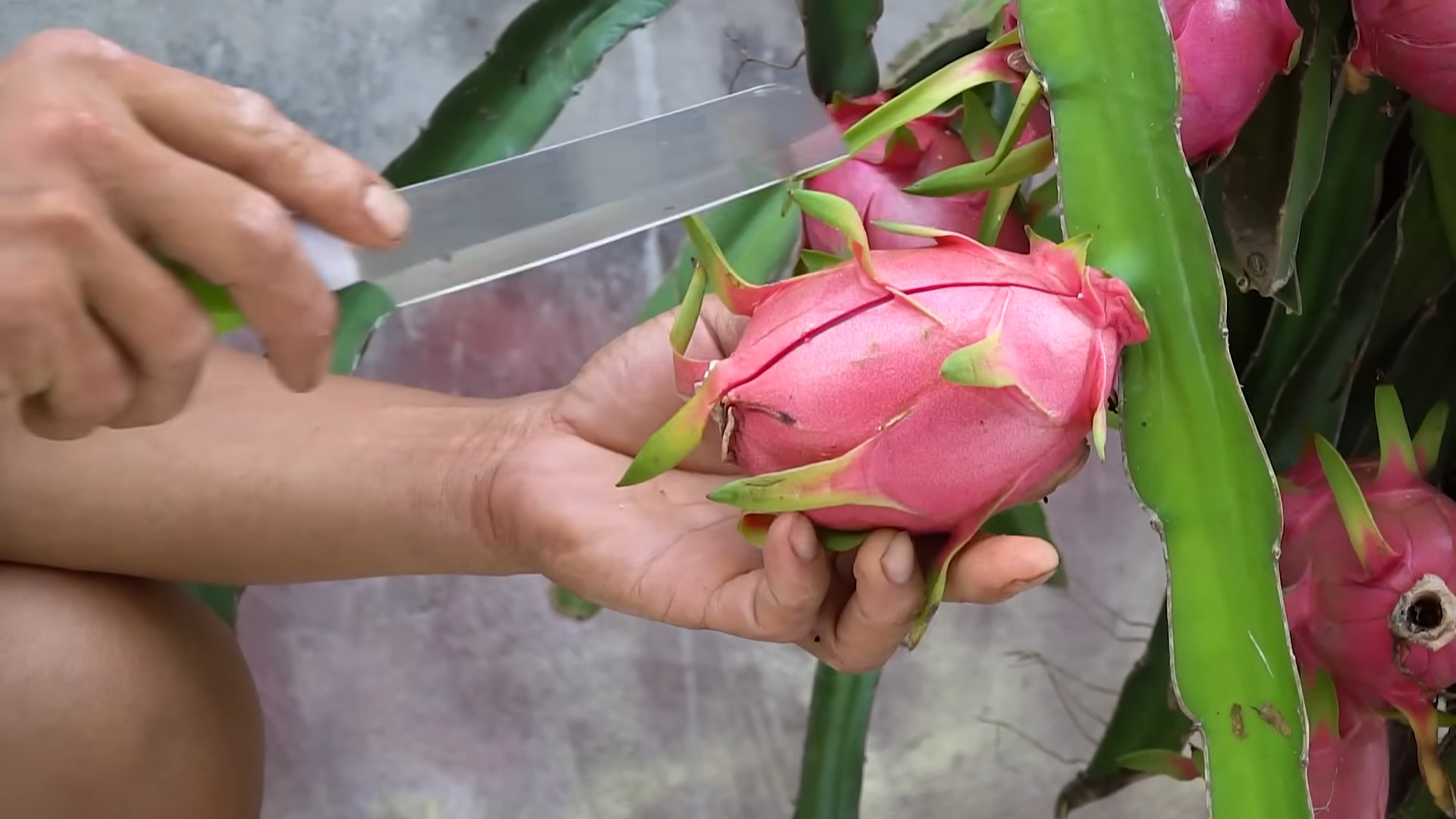
Grow Your Own Dragon Fruit: A Complete DIY Guide
Hey there, fellow plant enthusiasts! Ever dreamt of harvesting your own exotic dragon fruit right in your backyard (or even on your balcony)? Well, dream no more! I’m here to guide you through the exciting journey of growing dragon fruit at home. It’s easier than you might think, and the reward of biting into a sweet, homegrown dragon fruit is absolutely worth the effort. Let’s get started!
Choosing the Right Dragon Fruit Variety
Before we dive into the nitty-gritty, let’s talk about choosing the right dragon fruit variety. This is crucial for success, as some varieties are better suited for certain climates and growing conditions.
* Consider your climate: Dragon fruit thrives in warm climates (USDA zones 9-11). If you live in a colder region, you can still grow dragon fruit in containers and bring them indoors during the winter.
* Self-pollinating vs. cross-pollinating: Some varieties are self-pollinating, meaning they can produce fruit on their own. Others require cross-pollination, meaning you’ll need two different varieties to produce fruit. For beginners, I highly recommend starting with a self-pollinating variety like ‘Hylocereus undatus’ (white flesh) or ‘Hylocereus costaricensis’ (red flesh).
* Fruit color and taste: Dragon fruit comes in various colors, including white, red, pink, and yellow. The taste also varies, with some being sweeter than others. Do some research and choose a variety that appeals to your taste buds.
Gathering Your Supplies
Now that you’ve chosen your variety, it’s time to gather your supplies. Here’s what you’ll need:
* Dragon fruit cutting or seedling: You can purchase dragon fruit cuttings or seedlings from a reputable nursery or online retailer. Cuttings are generally cheaper and easier to propagate.
* Potting mix: Dragon fruit needs well-draining soil. A cactus or succulent potting mix works great. You can also make your own by mixing equal parts of potting soil, perlite, and sand.
* Large pot (if growing in a container): Choose a pot that is at least 24 inches in diameter and 12 inches deep. Dragon fruit plants can get quite large, so you’ll need a pot that can accommodate their growth.
* Support structure: Dragon fruit is a climbing cactus, so it needs a support structure to grow on. A sturdy trellis, post, or even a large tomato cage will work.
* Gardening gloves: Protect your hands from thorns and soil.
* Watering can or hose: For watering your dragon fruit plant.
* Pruning shears: For trimming and shaping your plant.
* Fertilizer: A balanced fertilizer (e.g., 10-10-10) or a fertilizer specifically formulated for cacti and succulents.
Planting Your Dragon Fruit
Alright, let’s get our hands dirty! Here’s how to plant your dragon fruit:
1. Prepare the pot: If you’re growing in a container, fill the pot with your chosen potting mix, leaving a few inches of space at the top.
2. Plant the cutting or seedling: If you’re planting a cutting, bury the bottom few inches in the soil. If you’re planting a seedling, gently remove it from its container and plant it at the same depth it was growing in the original container.
3. Install the support structure: Place the support structure in the center of the pot, close to the plant. Make sure it’s sturdy and can support the weight of the mature plant.
4. Water thoroughly: Water the plant thoroughly after planting, until water drains out of the bottom of the pot.
5. Mulch (optional): Add a layer of mulch around the base of the plant to help retain moisture and suppress weeds.
Caring for Your Dragon Fruit Plant
Now that your dragon fruit is planted, it’s time to provide it with the care it needs to thrive.
* Sunlight: Dragon fruit needs at least 6-8 hours of sunlight per day. Place your plant in a sunny location, such as a south-facing window or a spot in your garden that receives plenty of sunlight.
* Watering: Water your dragon fruit plant regularly, especially during the growing season (spring and summer). Allow the soil to dry out slightly between waterings. Overwatering can lead to root rot, so be careful not to overdo it. I usually check the soil moisture by sticking my finger about an inch deep. If it feels dry, it’s time to water.
* Fertilizing: Fertilize your dragon fruit plant every 2-3 months during the growing season with a balanced fertilizer or a fertilizer specifically formulated for cacti and succulents. Follow the instructions on the fertilizer label.
* Pruning: Prune your dragon fruit plant regularly to encourage branching and fruit production. Remove any dead or damaged stems. You can also prune to shape the plant and keep it from getting too unruly. I usually prune after the fruiting season.
* Pest and disease control: Dragon fruit plants are generally resistant to pests and diseases, but they can occasionally be affected by mealybugs, aphids, or fungal infections. Inspect your plant regularly for any signs of pests or diseases. If you find any, treat them promptly with an appropriate insecticide or fungicide. Neem oil is a great organic option for pest control.
* Winter care: If you live in a cold climate, bring your dragon fruit plant indoors during the winter. Place it in a sunny location and water it sparingly. Dragon fruit plants can tolerate temperatures as low as 32°F (0°C) for short periods, but they will not survive prolonged exposure to freezing temperatures.
Pollinating Your Dragon Fruit (If Necessary)
As mentioned earlier, some dragon fruit varieties require cross-pollination to produce fruit. If you’re growing a variety that requires cross-pollination, you’ll need to hand-pollinate the flowers.
1. Identify the flowers: Dragon fruit flowers are large, white, and fragrant. They typically bloom at night.
2. Collect pollen: Use a small brush to collect pollen from the stamen (the male part of the flower).
3. Transfer pollen: Transfer the pollen to the stigma (the female part of the flower) of a different dragon fruit flower of a compatible variety.
4. Repeat: Repeat this process for all the flowers that you want to pollinate.
Hand-pollinating can be a bit tedious, but it’s essential for ensuring fruit production with non-self-pollinating varieties.
Harvesting Your Dragon Fruit
After all your hard work, it’s finally time to harvest your dragon fruit!
1. Check for ripeness: Dragon fruit is typically ready to harvest about 30-50 days after flowering. The fruit will turn from green to bright pink or red (depending on the variety). The skin should be slightly soft to the touch, but not mushy.
2. Harvest the fruit: Use a sharp knife or pruning shears to cut the fruit from the stem.
3. Enjoy! Dragon fruit can be eaten fresh, or it can be used in smoothies, salads, and other dishes.
Troubleshooting Common Problems
Even with the best care, you might encounter some problems along the way. Here are some common issues and how to address them:
* Yellowing leaves: This could be a sign of overwatering, underwatering, or nutrient deficiency. Adjust your watering schedule and fertilize your plant if necessary.
* Lack of flowering: This could be due to insufficient sunlight, lack of nutrients, or improper pruning. Make sure your plant is getting enough sunlight, fertilize it regularly, and prune it properly.
* Fruit drop: This could be caused by poor pollination, extreme temperatures, or insufficient watering. Hand-pollinate your flowers if necessary, protect your plant from extreme temperatures, and water it regularly.
* Root rot: This is usually caused by overwatering. Make sure your soil is well-draining and avoid overwatering. If you suspect root rot, repot your plant in fresh soil.
Propagating Dragon Fruit from Cuttings
Want to expand your dragon fruit empire? Propagating from cuttings is a simple and effective way to create new plants.
1. Take a cutting: Choose a healthy stem that is at least 12 inches long. Use a clean, sharp knife or pruning shears to cut the stem.
2. Allow the cutting to callous: Let the cutting dry out for a few days until the cut end forms a callus. This will help prevent rot.
3. Plant the cutting: Plant the calloused end of the cutting in a pot filled with well-draining potting mix.
4. Water sparingly: Water the cutting sparingly until it develops roots.
5. Transplant: Once the cutting has developed roots, you can
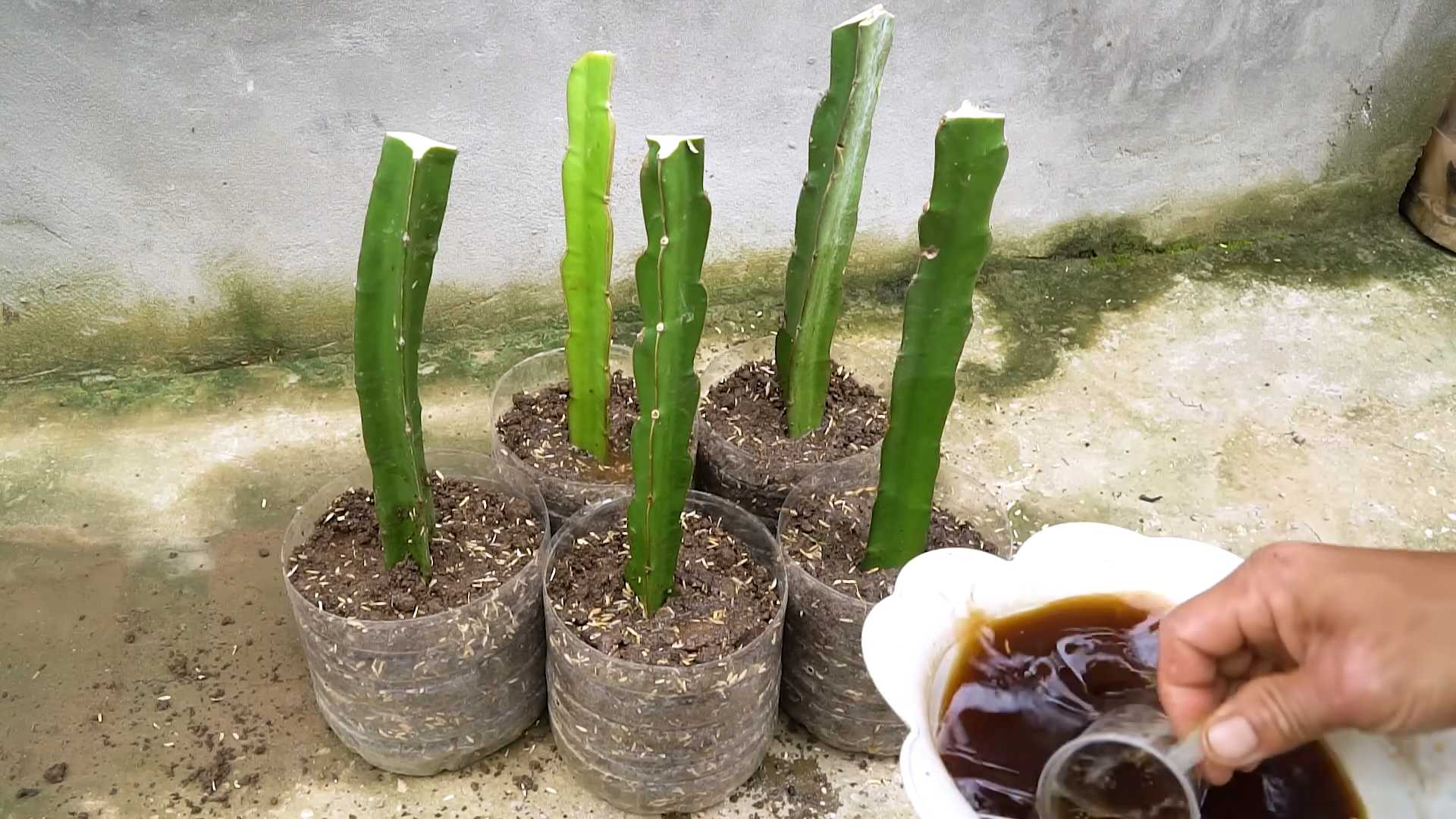
Conclusion
So, there you have it! Growing dragon fruit at home is not only achievable but also incredibly rewarding. Forget those expensive, often bland, store-bought fruits. Imagine stepping into your garden and harvesting your own vibrant, sweet, and juicy dragon fruit. This DIY trick transforms your backyard into a tropical paradise, offering a sustainable and cost-effective way to enjoy this exotic delicacy.
Why is this a must-try? Because it’s more than just growing a fruit; it’s about connecting with nature, learning new skills, and experiencing the satisfaction of nurturing something from a small cutting to a thriving plant. Plus, the dragon fruit plant itself is a stunning addition to any garden, with its unique climbing structure and mesmerizing nocturnal blooms.
But the benefits don’t stop there. By growing your own dragon fruit, you control the growing environment, ensuring your fruit is free from harmful pesticides and chemicals. You also reduce your carbon footprint by eliminating the need for long-distance transportation. It’s a win-win for you and the planet!
Ready to take your dragon fruit cultivation to the next level? Consider these variations and suggestions:
* Experiment with different varieties: Dragon fruit comes in various colors and flavors, from the classic white-fleshed variety to the more exotic red and yellow types. Try grafting different varieties onto a single plant for a diverse harvest.
* Optimize your trellis system: A sturdy and well-designed trellis is crucial for supporting the heavy fruit. Explore different trellis designs, such as circular or T-shaped structures, to maximize space and sunlight exposure.
* Enhance pollination: While some dragon fruit varieties are self-pollinating, others require hand-pollination for optimal fruit set. Learn the art of hand-pollination to ensure a bountiful harvest.
* Composting and Soil Enrichment: Dragon fruit thrives in well-draining, nutrient-rich soil. Regularly amend your soil with compost, aged manure, or other organic matter to provide essential nutrients. Consider adding a slow-release fertilizer specifically formulated for cacti and succulents.
* Pest and Disease Management: Keep a close eye on your plants for signs of pests or diseases. Implement preventative measures, such as proper watering and ventilation, to minimize the risk of problems. Use organic pest control methods whenever possible.
* Climate Control: If you live in a colder climate, consider growing your dragon fruit in a greenhouse or container, allowing you to move it indoors during the winter months. You can also use frost blankets to protect your plants from freezing temperatures.
* Propagation Techniques: Once you’ve mastered the basics of growing dragon fruit, experiment with different propagation techniques, such as seed propagation or air layering, to expand your collection.
Don’t be intimidated by the thought of growing dragon fruit at home. With a little patience, dedication, and the right information, you can successfully cultivate these amazing fruits in your own backyard. We encourage you to embark on this exciting journey and discover the joys of homegrown dragon fruit.
So, grab your cuttings, prepare your soil, and get ready to experience the magic of growing dragon fruit at home. And most importantly, don’t forget to share your experiences with us! We’d love to hear about your successes, challenges, and any tips you’ve learned along the way. Share your photos and stories on our social media channels using #HomegrownDragonFruit. Let’s build a community of dragon fruit enthusiasts and inspire others to try this rewarding DIY trick!
Frequently Asked Questions (FAQ)
What is the best time of year to plant dragon fruit cuttings?
The ideal time to plant dragon fruit cuttings is during the spring or early summer. This allows the cuttings to establish strong roots before the onset of colder weather. The warm temperatures and longer daylight hours promote rapid growth and development. However, if you live in a tropical or subtropical climate, you can plant dragon fruit cuttings year-round, as long as you provide adequate protection from extreme temperatures.
How often should I water my dragon fruit plant?
Dragon fruit plants are relatively drought-tolerant, but they still require regular watering, especially during the growing season. Water deeply when the top inch of soil feels dry to the touch. Avoid overwatering, as this can lead to root rot. Reduce watering frequency during the winter months when the plant is dormant. The frequency of watering will also depend on your climate, soil type, and the size of your pot.
What kind of soil is best for growing dragon fruit?
Dragon fruit plants thrive in well-draining soil that is rich in organic matter. A mixture of cactus potting mix, perlite, and compost is ideal. Avoid heavy clay soils, as they can retain too much moisture and lead to root rot. You can also amend your soil with sand or gravel to improve drainage. The ideal pH range for dragon fruit is between 6.0 and 7.5.
How much sunlight does a dragon fruit plant need?
Dragon fruit plants need at least six hours of direct sunlight per day to thrive. However, they can also tolerate partial shade, especially during the hottest part of the day. If you are growing your dragon fruit plant indoors, place it near a sunny window or provide supplemental lighting. Insufficient sunlight can lead to stunted growth and reduced fruit production.
How long does it take for a dragon fruit plant to produce fruit?
Dragon fruit plants typically start producing fruit within one to three years of planting, depending on the variety and growing conditions. Proper care, including adequate sunlight, watering, and fertilization, can help accelerate fruit production. Hand-pollination may also be necessary for some varieties to ensure fruit set.
What are some common pests and diseases that affect dragon fruit plants?
Common pests that can affect dragon fruit plants include aphids, mealybugs, and scale insects. These pests can be controlled with insecticidal soap or neem oil. Diseases that can affect dragon fruit plants include stem rot, root rot, and fungal infections. Proper watering, ventilation, and sanitation can help prevent these diseases.
How do I prune my dragon fruit plant?
Pruning is essential for maintaining the shape and health of your dragon fruit plant. Remove any dead, damaged, or diseased branches. Also, prune back any overcrowded or tangled branches to improve air circulation and sunlight penetration. Pruning can also encourage fruit production by stimulating new growth. The best time to prune dragon fruit plants is after they have finished fruiting.
Can I grow dragon fruit in a container?
Yes, dragon fruit can be successfully grown in containers, making it a great option for those with limited space. Choose a large container with good drainage holes. Use a well-draining potting mix and provide a sturdy trellis for the plant to climb on. Container-grown dragon fruit plants may require more frequent watering and fertilization than those grown in the ground.
How do I know when my dragon fruit is ripe?
A ripe dragon fruit will have a vibrant, even color and a slightly soft texture. The skin should be smooth and free from blemishes. The fruit should also detach easily from the stem with a gentle twist. You can also check the “wings” or scales on the fruit. When they start to dry out and turn brown, it’s a sign that the fruit is ripe.
Is dragon fruit self-pollinating?
Some varieties of dragon fruit are self-pollinating, while others require cross-pollination. If your dragon fruit plant is not producing fruit, it may need to be hand-pollinated. To hand-pollinate, use a small brush to transfer pollen from the stamen of one flower to the pistil of another flower. The best time to hand-pollinate is at night when the flowers are open.

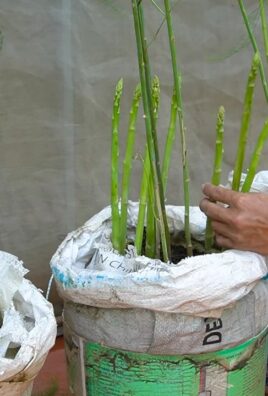
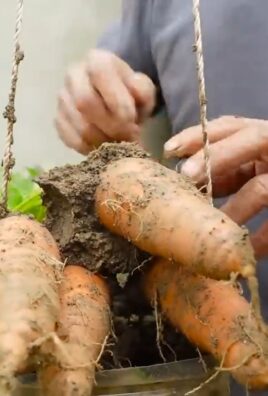
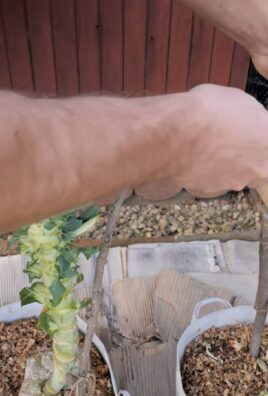
Leave a Comment